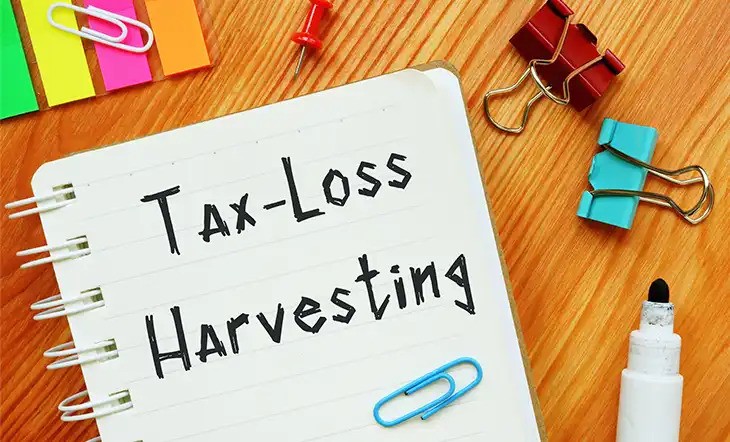7 Common Investing Myths Debunked

Investing can be one of the most effective ways to build wealth over time, yet many potential investors are held back by misinformation and myths. According to a survey by FINRA, a staggering 53% of Americans feel that they do not have enough knowledge to invest. This lack of understanding can be detrimental, as it prevents individuals from taking advantage of opportunities to grow their wealth. Having misconceptions about investing also makes them more vulnerable to myths and consequently leads to poor investment decisions or impacts investment performance.
When myths about investing circulate unchecked, they can discourage people from participating in financial markets, leading to missed opportunities and financial insecurity. Consider consulting with a professional financial advisor who can guide you on how to make informed decisions and avoid investing based on flawed information.
This article aims to debunk the most common investing myths that often deter people from making informed investment decisions and equip you with the right approach to investing, so you can maximize your capital.
Below are the 7 most common investing myths that are best avoided when investing:
Myth 1: Investing is only for the wealthy
The belief that only the wealthy can afford to invest is a common misconception that discourages many potential investors. This myth is rooted in the idea that significant capital is required to make meaningful investments, creating a barrier for those with limited financial resources.
However, this is far from true and the investment space has come a long way. Modern financial products and services, such as robo-advisors and fractional shares, have made investing accessible to everyone, regardless of their financial situation. For instance, robo-advisors allow individuals to start investing with minimal amounts, often as low as $1, and provide automated, low-cost portfolio management. Additionally, fractional shares enable investors to buy portions of a stock, meaning one can start investing in high-value stocks without needing thousands of dollars. According to a MagnifyMoney report, 71% of young investors invest less than $500 a month.
It is worthwhile to start investing with whatever amount you can afford. Even small, consistent investments can grow significantly over time thanks to the power of compound interest. The key is to begin the investment journey and gradually increase contributions as financial circumstances improve.
Myth 2: Higher risk always means higher returns
Many investors believe that taking on more risk will guarantee higher returns. This misconception can lead to overly aggressive investment strategies that may result in significant losses.
While it is true that higher-risk investments have the potential for higher returns, this is not a guarantee. The relationship between risk and return is more complex. The low-volatility anomaly, a concept highlighted by economists Robert Haugen and James Heins, shows that over the long term, investments with lower volatility have sometimes outperformed their higher-risk counterparts. Their research, spanning from 1926 to 1971, demonstrated that portfolios with lower variance in returns often achieved greater average returns compared to those with higher volatility.
Investors should focus on fundamental factors like the financial health of companies, market conditions, and diversification rather than simply chasing high-risk opportunities. Diversifying investments across various asset classes and sectors can help mitigate risk and create a more stable and potentially profitable portfolio. For example, investing in a mix of stocks, bonds, and other assets can balance the risk and reward more effectively.
Myth 3: You can time the market
Many investors believe that they can predict market movements to buy low and sell high, maximizing their returns. This myth is fueled by stories of successful market timing and the allure of quick profits.
However, accurately timing the market is extremely challenging, even for seasoned professionals. Market movements are influenced by a myriad of factors, including economic data, geopolitical events, and investor sentiment, making precise predictions nearly impossible. Research indicates that bad days happen during good markets and vice versa and also missing the best days in this span may lead to significant losses. This shows exactly why you should not try to time the market and stay invested to maximize returns.
Instead of attempting to time the market, investors should consider adopting strategies like dollar-cost averaging. This approach involves investing a fixed amount of money at regular intervals, regardless of market conditions. By doing so, investors can mitigate the impact of market volatility and reduce the risk of making poorly timed investment decisions.
SPONSORED WISERADVISOR
Myth 4: Diversification simply means owning a lot of stocks
Many people think that simply owning a large number of stocks or funds ensures a well-diversified portfolio. This misconception leads investors to believe that quantity alone can protect them from market volatility.
True diversification, however, involves spreading investments across different sectors and asset classes. Owning numerous stocks within the same sector does not provide adequate diversification because the stocks are likely to be affected by similar market factors. For instance, a portfolio heavily concentrated in technology stocks will suffer if the tech sector underperforms.
Effective diversification means investing in a mix of asset types, including stocks from various sectors, bonds, real estate, and possibly alternative investments like commodities. This strategy helps to spread risk and can smooth out returns over time.
Investors should aim to build a diversified portfolio by including assets that are not closely correlated with each other. For example, when stocks decline, bonds or real estate investments might perform better, helping to balance the overall performance of the portfolio. Using low-cost index funds or exchange-traded funds (ETFs) can also be an effective way to achieve diversification.
Myth 5: Investing requires expert knowledge
The world of investing can seem intimidating due to the complex financial jargon and the multitude of investment options. Terms like “dividend yield,” “price-to-earnings ratio,” and “compound interest” may overwhelm beginners, leading to the misconception that successful investing requires expert knowledge.
However, successful investing doesn’t require being an expert. Modern investment platforms and tools have made it easier than ever for beginners to get started. According to a report by World Economic Forum, young investors are acing the investment scene with 70% being under the age of 45.
Consider using user-friendly apps and services to start investing. These platforms often provide automated advice, educational resources, and simple interfaces that make investing accessible to everyone and do not require in-depth financial knowledge. They also offer features like robo-advisors, which can create and manage a diversified portfolio on your behalf. You may also consider hiring a financial advisor for personalized advice.
Myth 6: Gold is always a safe investment
Gold is often perceived as a universally safe investment, a belief rooted in its historical role as a store of value and a hedge against inflation. This perception is particularly strong during times of economic uncertainty, where gold is seen as a refuge from market volatility.
However, gold’s performance can be inconsistent, and it sometimes underperforms compared to other investments like stocks over certain periods. For instance, while gold has appreciated in value over the long term, it has also experienced significant price drops. From 1980 to 2000, gold prices fell by about 50%, and even more recently, from 2011 to 2015, gold lost nearly 40% of its value. Meanwhile, stocks have historically provided higher long-term returns.
Rather than relying solely on gold, consider a balanced approach that includes a variety of investments. Diversifying your portfolio with a mix of stocks, bonds, real estate, and perhaps a small allocation to gold can help manage risk and improve potential returns. This approach leverages the strengths of different asset classes, ensuring that your portfolio is better positioned to weather market fluctuations.
Myth 7: Investing is a get-rich-quick scheme
The allure of quick riches through investing is a powerful draw for many people. Stories of individuals striking it rich by buying the right stock at the right time fuel this myth, leading to a perception that investing is a fast track to wealth.
However, successful investing is generally about long-term growth and patience rather than quick gains. The reality is that the stock market can be volatile, and attempting to get rich quickly often leads to significant losses.
Promoting a disciplined, long-term investment strategy focused on steady growth is essential. This approach involves setting realistic expectations, diversifying investments to manage risk, and remaining patient. Over time, compound interest and consistent contributions to a well-diversified portfolio can lead to substantial wealth accumulation.
To conclude
Embarking on your investing journey armed with the correct knowledge and a clear plan for long-term success is important. Understanding and debunking common investing myths can help you make informed decisions that support your financial goals.
Consider seeking the services of a financial advisor to guide you through the complexities of investing. A financial advisor can provide personalized advice, help you develop a solid investment strategy, and ensure you stay on track to achieve your long-term financial objectives. With professional guidance and a disciplined approach, you can navigate the world of investing with confidence and achieve steady growth over time.
Use the free advisor match tool to get matched with seasoned financial advisors who can help debunk and stay clear of investing myths so you can make informed investing decisions and attain your financial goals. Answer some simple questions about your financial needs and get matched with 2 to 3 advisors who can best fulfill your financial requirements.








.jpg)













.jpg)





.jpg)


.jpg)


.jpg)















.jpg)




.jpg)





.jpg)

.jpg)







.jpg)

.jpg)






.jpg)




.jpg)

.jpg)


.jpg)

.jpg)




.png)
.jpg)
.jpg)




.jpg)

.jpg)


.jpg)



.jpg)

.jpg)

.jpg)
.jpg)
.jpg)
.jpg)

.jpg)




.jpg)


.jpg)

.jpg)


.jpg)
.jpg)
.jpg)
.jpg)
.jpg)

.jpg)




.jpg)
.jpg)


.jpg)
.jpg)
.jpg)
.jpg)

.jpg)
.jpg)















.jpg)
.jpg)



.jpg)



.jpg)












.jpg)



